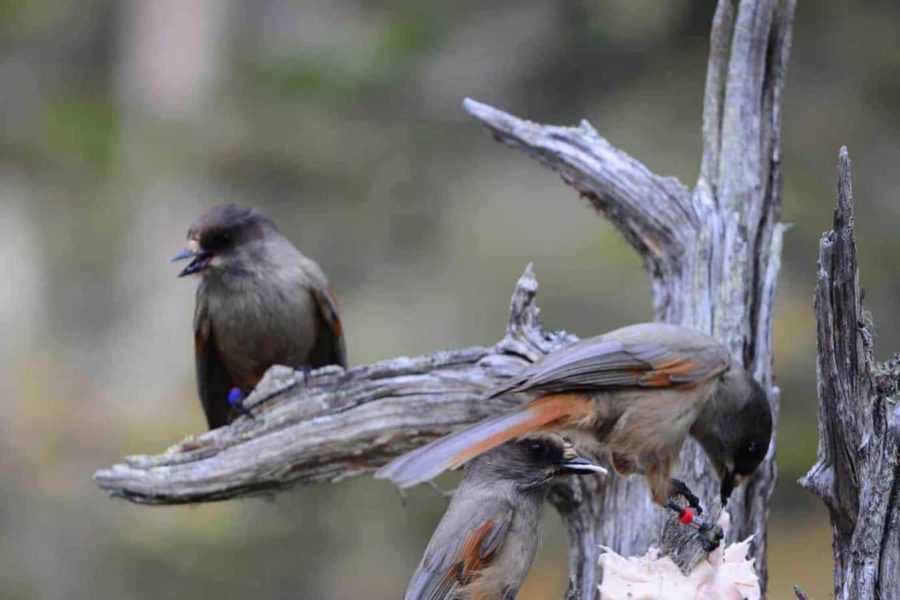In few mammal, birds and fish species, individuals can recognize unfamiliar siblings. Until now, however, it remained unclear whether animals also are able to identify more distant, unfamiliar relatives. Evolutionary biologists from the University of Zurich recently demonstrated that Siberian jays, a member of the crow family, evolved this ability.
Kinship is a critical factor favoring cooperation between individuals. The reason behind this pattern is that helping closely related individuals aids propagating own genes. Consequently, most insects, meerkats or birds that breed cooperatively ((i.e., individuals help to raise offspring that are not their own) live in family groups. The Siberian jay, which occurs in Northern Scandinavia and the Siberian taiga, lives in family groups that share a territory. Non-breeding birds are both offspring that remain with their parents for several year beyond independency and individuals that immigrate into groups early in their lives.
Amazing recognitions skills
Although the breeding pair is very tolerant towards their own offspring, they often behave aggressively towards unrelated non-breeders and chase them away from food. Using genetic relatedness analyses, a team of scientists discovered that the breeders are especially aggressive towards the most distantly related group members. “This finding reveals that Siberian jays are able to recognize fine-scale differences in their kinship to other individuals, even to individuals that are unfamiliar to the breeders before they settle in their group,” explains the first author Michael Griesser. While other bird species identify relatives based on their appearance or calls, it remains still unclear how Siberian jays assess the degree of kinship of unfamiliar individuals.
Although Siberian jays do not breed cooperatively, they are very cooperative in other contexts. Parents protect their young against predators and share food with them, even for years after they are fully fledged. Interestingly, however, Siberian jays do not use their ability to recognize kinship of other individuals for their own offspring: Parents are equally tolerant to own nestlings and nestlings that are swapped experimentally.
The evolutionary advantage of recognizing unfamiliar relatives
Why did Siberian jays evolve this ability in the first place? According to Michael Griesser, the answer lies in the birds’ cooperative behavior. Several jay groups can gather at carcasses of large herbivores, such as moose or reindeer, and, in this context, tolerating unfamiliar relatives is an evolutionary advantage. “It’s a selective advantage to share food only with close relatives and not very distant or unrelated individuals,” says Michael Griesser. Recognizing related individuals is generally advantageous when individuals cooperate or tolerate each other during social interactions. Besides, birds preferably mate with unrelated individuals to avoid inbreeding. Thus, kin recognition may be generally a widespread but overlooked behavior providing benefits in multiple contexts.


